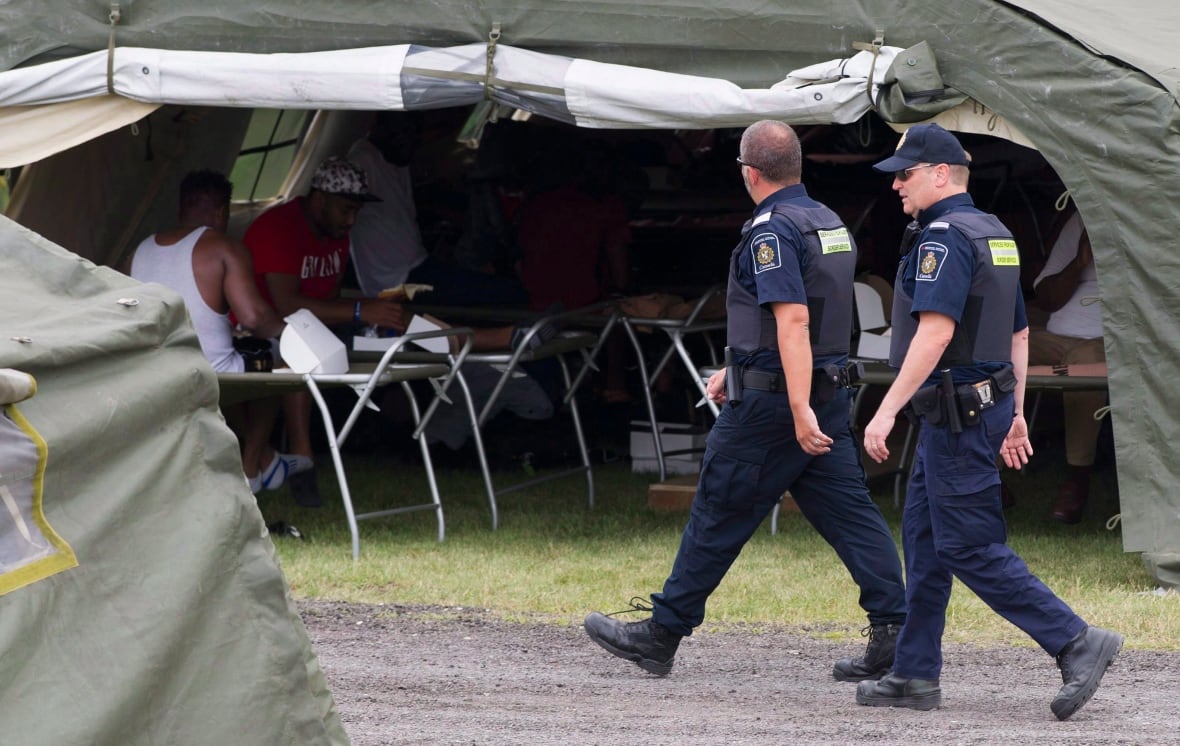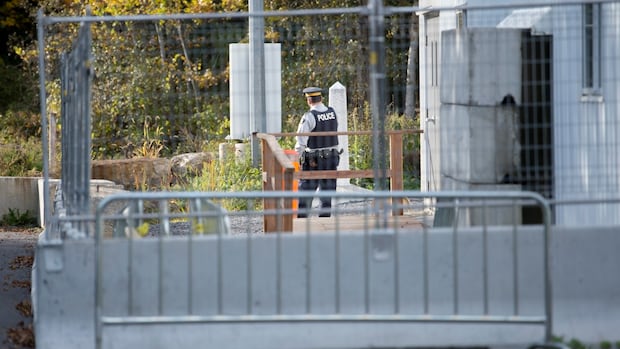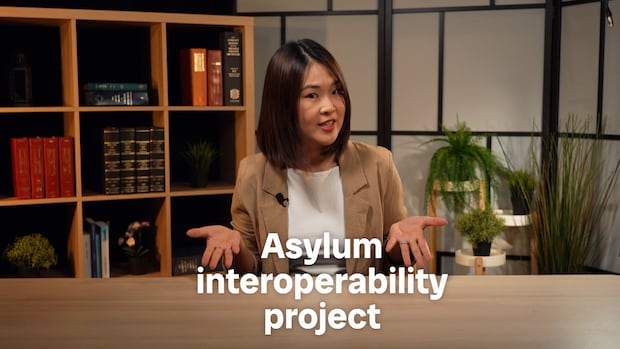[
A $68-million project led by Immigration, Refugees and Citizenship Canada (IRCC) that was meant to revamp Canada’s outdated asylum system and enhance the integrity of the country’s borders was quietly shut down last year — an “unexpected” move for some in the government because it was only partly completed, internal documents show.
Now, some critics fear the outcomes that were achieved may be more harmful than beneficial for people seeking protection in Canada.
IRCC’s “asylum interoperability project” began in 2019 and was supposed to wrap up by 2022. It came during a surge of asylum seekers entering Canada, putting pressure on an already struggling system that relied heavily on paper files. Its launch followed calls for major reform.
The main goals of the project was “to transform the asylum system” into a digital one, automate data and create real-time information sharing between three departments — IRCC, Canada Border Services Agency (CBSA) and the Immigration and Refugee Board of Canada (IRB).
If these tools are so effective and being implemented, then why do we still have this backlog?– Wei Will Tao, immigration and refugee lawyer
It also hoped to “enhance integrity, security and deterrence within the asylum system,” while improving efficiency and service to claimants, documents show.
It allocated about $48.4 million to IRCC, $15.5 million to CBSA and $3.8 million to the IRB over several years to meet these goals, an internal document shows. IRCC said it had used 75 per cent of its allocated funds.
Through access to information documents, CBC News has learned the project was abandoned in February 2024 after it failed to get another extension from the Department of Finance.
But just months after prematurely halting this project, then Immigration minister Marc Miller told the House of Commons immigration committee: “I want to reform the system. It’s not working in the way it should.”
At the time, he said Canada’s asylum and refugee system was still struggling due to volume and inefficiency.

According to records obtained by CBC, about 64 per cent of the interoperability project was accomplished. IRCC either scrapped or “deferred” the rest of the tasks to future major IT projects.
“The decision to close the project was unexpected,” reads a 2024 CBSA briefing note.
The latest IRB data shows a backlog of 288,198 pending applications as of last month — a historic high that’s nearly tripled since June 2023, when the interoperability project was well underway.
“The first question is, if these tools are so effective and being implemented, then why do we still have this backlog?” said Wei Will Tao, an immigration and refugee lawyer.
A major project to secure and revamp Canada’s asylum system was shut down last year — an “unexpected” move for some in the government, CBC News has learned. Now, some critics fear the outcomes that were achieved may be more harmful than beneficial for people seeking protection in Canada.
Automation, online portal among goals achieved
All three departments operate their own IT systems, “causing program integrity risks” and delays, a project document reads.
While incrementally rolling out improvements until its shutdown in 2024, the project faced “capacity issues,” “black-out periods” in IRCC’s internal application processing tool Global Case Management System (GCMS), and a “downgrade” in priorities which led to delays past its 2022 finish date, records say.
The project still managed to build an online refugee application process, and automated case creation, data entry and admissibility checks, according to documents. For IRB hearings, the project also allowed more real-time information exchange between departments.
The process to detain and remove people from Canada was also “enhanced,” according to a CBSA briefing note, citing the ability to automatically cancel valid work or study permits when a removal order is issued, among other improvements.
But there were several wish list items the project couldn’t make happen — like a CBSA officer portal and online applications for pre-removal risk assessments (an application for people facing removal from Canada.)
Another task that was skipped — a function to “view notes associated with a claim in one place,” which would have helped officers’ workflow, CBSA records show.
In a closing note, one government official noted that “the project did deliver on every benefit identified but not all to the depth it aimed to.”
IRCC declined an interview. The department didn’t specify which tasks it was unable to complete, but said in an email those may be part of future projects. IRCC has hundreds of millions of dollars allocated to digital modernization in the coming years.

Impacts felt, but questions remain
“The actual project itself and the fact that there’s huge funding … that came to us as a bit of a surprise,” said Tao, who’s part of a collective of experts monitoring AI and technological advances in Canada’s immigration system.
Tao said he didn’t “want to deny the positivity” of some digital advancements. But he raised questions around transparency, the kind of information being exchanged between the three departments and how it’s being used by each partner — especially because the IRB is an arms-length, independent tribunal.
These so-called streamline mechanisms are actually making life harder for people.– Syed Hussan, Migrant Rights Network
“What if there’s information that’s being transmitted behind the scenes that we’re not a party to, or that could implicate our clients’ case without us knowing?” asked Tao, founder of Heron Law Offices in Burnaby, B.C.
Despite multiple followups, the IRB did not respond to CBC’s requests for information. IRCC wrote to CBC that the IRB maintains its adjudicative independence.
“We do have serious concerns about this interoperability — being yes, an efficiency tool and a way for things to be streamlined — … [but] is our ability to contest these systems being altered, or even perhaps barriered, by these tools?” Tao asked.
“Digitization is not the answer,” said Syed Hussan, spokesperson for the Migrant Rights Network. “These so-called streamline mechanisms are actually making life harder for people.”
Hussan said the digital-focused application system has “caused immense havoc” for some people with technological barriers. He also questions the “enormous focus” on sharing private information between agencies and the oversight of that.
“What is framed as a technical step forward is actually a series of policies that make it harder for refugees to gain protection,” said Hussan. “It’s part of a broader turn rightward towards Trump-like policies in the immigration system.”
Hussan said what the system actually needs is more resources for settlement organizations and claimants who need protection.
“Instead there’s actually just mass firing of federal civil servants as well as underfunding of settlement agencies and money being put into these digitization projects — which largely seem to be about streamlining removals rather than ensuring rights,” Hussan said.
Canada enforced more removal orders in the past year than in any other 12-month period since 2019 — 18,048 in the 2024-25 fiscal year, according to CBSA data.

NDP MP and immigration critic Jenny Kwan said she was also in the dark about this project.
“The quiet abandonment of the initiative is very troubling and speaks to a further failure of the system,” said Kwan in an email to CBC. She is demanding answers from the Liberal government.
IRCC said in an email that the decision to close out the project early was unrelated to workforce adjustments or restructuring.
“While [this project] delivered important advancements, Canada continues to face significant migration pressures,” wrote IRCC, pointing to the Strong Borders Act (Bill C-2).
The department said the reforms in that legislation will build on “the foundation laid” by the asylum interoperability project, and “further modernize and protect the integrity of the system.”
CBSA said in a statement it’s “committed” to work with IRCC to incorporate more improvements in future projects.
The Department of Finance declined to comment.

